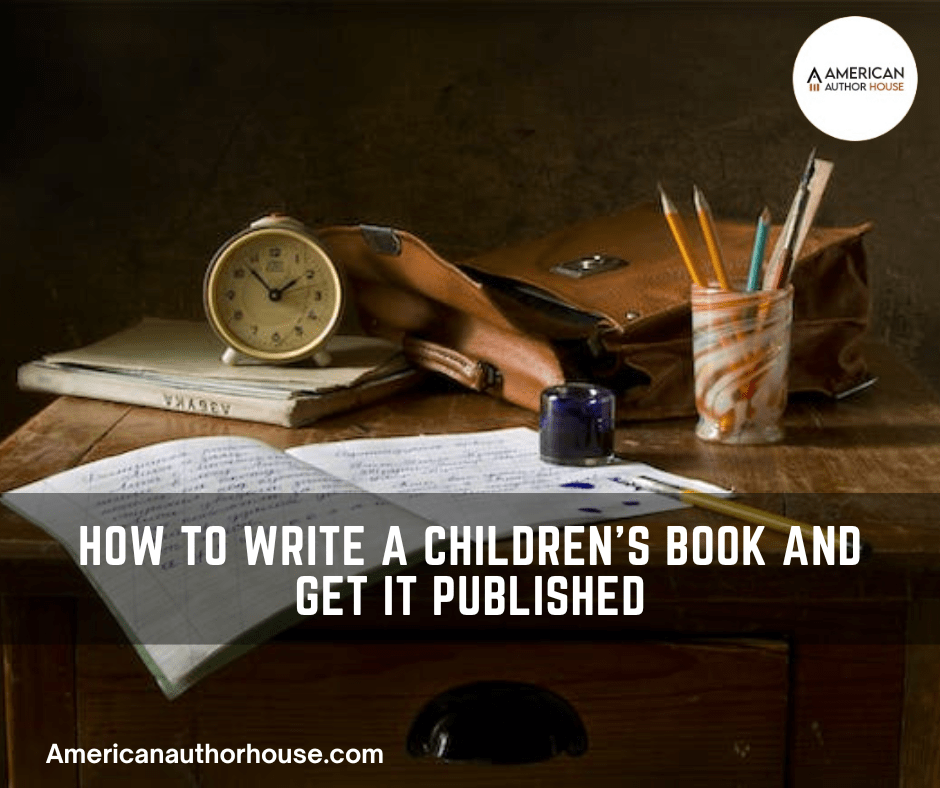
Writing
Introduction
Writing a children’s book can be a rewarding and creative endeavor. If you have a story to tell and want to share it with young readers, this article will guide you through writing and getting your children’s book published.
Whether you are an aspiring author or a parent interested in creating a book for your child, these steps will help you bring your story to life.
Choosing the Right Topic
So choosing the right topic for a book is very important. You should choose a theme that will grab the attention of young readers and make them think about their own lives. Think about what children like and what subjects can teach them important things. Mainly children are interested in stories about friendship, family, excitement, and overcoming difficulties. By choosing a topic that you are interested in and that young readers will like, you set the stage for a great book.
Understanding the Target Audience
To write effectively for children, it’s essential to understand your target audience. So think about the age group you’re writing for and change your style to fit. Younger children need words and sentences that are easier to understand, while older children can understand complex ideas. Find out how well your audience can read, what they like, and how old they are. By knowing what they want and what they like, you can make content that will interest and excite them.
Developing Engaging Characters
So characters are the most important part of a children’s book. Children want to connect with the figures and go on a journey. Create characters that children can connect to and will remember. Give them personalities, skills, and weaknesses that are unique to them. The characters in a story should grow and learn as the story goes on, giving young readers important lessons. By giving children people to root for, you can be sure that your book will be interesting and catch their attention.
Crafting a Captivating Plot
A captivating plot is essential to hold the attention of young readers. So ensure your story has a clear beginning, middle, and end. Also, add conflict and tension to the story to keep it moving. Children like to be surprised, laugh, and go on adventures, so add these things to your story. Writing a story that makes them think and feel will give children a reading experience they will remember.
Creating an Outline
Making a plan before you start writing the first draft is important. So a plan is like a map for your story, ensuring it flows well and makes sense. Your outline should be divided into sections reflecting a chapter or important scene. This will help you get your ideas in order and keep track of how your story is going. Also, a plan helps you stay on track and keeps you from getting writer’s block.
Writing the First Draft
With your outline in hand, start writing the first draft of your book. Focus on storytelling and bringing your characters to life. Use simple and concise language that is appropriate for the target age group. Keep your sentences short and engaging to maintain the reader’s attention.
Refining the Story
Once you have completed the first draft, take the time to refine and polish your story. Review each chapter, ensuring that the pacing is appropriate and the plot is coherent. Consider beta readers’ feedback or seek professional editorial assistance to improve your manuscript.
Adding Illustrations
Illustrations play a vital role in enhancing the reading experience of a children’s book. So collaborate with an illustrator or create your own artwork to visually bring your story to life. The illustrations should complement the text and help children visualize the characters and settings. Use vibrant colors, engaging visuals, and attention to detail to capture young readers’ imaginations. Well-crafted illustrations can create a visual narrative that enhances the overall impact of your book, making it more engaging and memorable.
Editing and Proofreading
Editing and proofreading are crucial steps in preparing your manuscript for publication. Review your book for grammar, spelling, and punctuation errors. Ensure that the language and vocabulary are suitable for the target audience. Consider hiring a professional editor for a thorough review.
Formatting and Layout
Proper formatting and layout make your book visually appealing. So use appropriate font styles and sizes, spacing, and margins. Consider the placement of illustrations and text on each page. Pay attention to the readability and ensure the text is easy to follow.
Finding a Publisher
Finding a publisher can be hard, but there are options available. Research publishing firms that focus on children’s books that fit your genre and style. One such publisher is American Author House. They focus on children’s books and work closely with the authors to make their stories come to life.
Submitting Your Manuscript
Follow the submitting rules that each publisher gives you. Include a cover letter, a short author biography, and a book summary. Send your manuscript to the publisher electronically or by regular mail, based on their preference. Be calm and ready for people to say no.
Choices for self-publishing
If traditional publishing proves difficult, consider self-publishing your children’s book. Self-publishing offers you control and flexibility in showcasing your work, and you can explore various self-publishing companies. Look into reliable self-publishing companies and see what services they offer, such as formatting, printing, and distributing.
Promoting Your Book
Reaching your target audience requires marketing your children’s book. Utilize platforms like social media, create a website or blog, and interact with potential readers, as discussed in our article on Promoting Your Book.
Key Characteristics and Profound Details
| Step | Key Points | Additional Steps |
|---|---|---|
| Choosing the Right Topic | Choose a theme that resonates with young readers, like friendship or family. | Consider interests and learning aspects for children. |
| Understanding the Target Audience | Understand the age group you’re writing for and adjust your style accordingly. | Consider reading level and preferences of the age group. |
| Developing Engaging Characters | Create memorable characters with unique personalities and growth. | Illustrate character development and lessons learned. |
| Crafting a Captivating Plot | Ensure your story has a clear structure with conflict and engaging elements. | Include elements of surprise, humor, and adventure. |
| Creating an Outline | Plan your story structure in advance to maintain flow and coherence. | Use the outline to prevent writer’s block. |
| Writing the First Draft | Start writing, focusing on storytelling and character development. | Use language suitable for the target age group. |
| Refining the Story | Review and polish your story, ensuring pacing and plot coherence. | Consider feedback from beta readers or editors. |
Conclusion
Writing a children’s book and publishing it is an exciting journey requiring dedication and creativity. Following the steps outlined, you can bring your story to life and share it with young readers worldwide. Remember to stay persistent, continue learning, and never give up on your dreams of becoming a published children’s book author.



